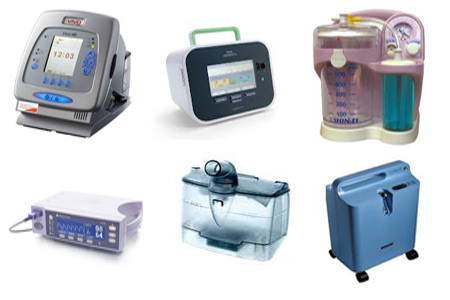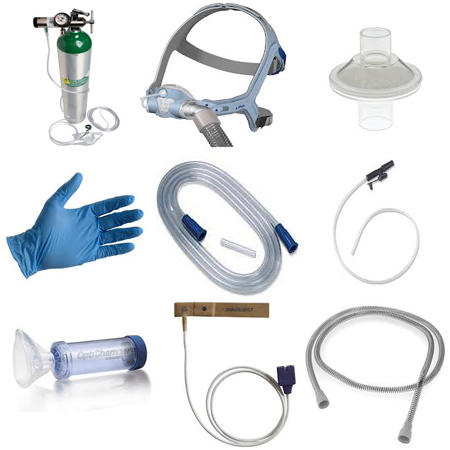Angelmum
Moderator
Rare diseases are long-standing, life threatening, progressively disabling conditions that affect a small percentage of population (1 in 2,500 individuals) and require multi-disciplinary care. One rare disease may affect only a handful of patients in one demographic (eg. In the EU) and another might affect as many as 50,000 in other region (eg. Asia).
80% of rare diseases have identified genetic origins whilst others are the result of infections (bacterial or viral), allergies and environmental causes, or are degenerative and proliferative. The 6000 to 8000 rare diseases are characterised by a broad diversity of disorders and symptoms that vary not only from disease to disease but also from patient to patient suffering from the same disease.
Relatively common symptoms can hide underlying rare diseases leading to misdiagnosis and delaying treatment. Quintessentially disabling, the patient's quality of life is affected by the lack or loss of autonomy due to the chronic, progressive, degenerative and frequently life-threatening aspects of the disease. The fact that there are often no existing effective cures adds to the high level of pain and suffering endured by patients and their families.
Which are the Rare Genetic diagnosed in Singapore?
My daughter was diagnosed with Angelman Syndrome, a deletion of chromosome 15. This medical term will remain as long as my girl lives. Angelman syndrome affects an estimated 1 in 12,000 to 20,000 people.
AS is a neurodevelopmental genetic disorder characterized by global developmental delays, speech impairment, disorders of balance or movement and frequent laughter, resulting from a defect in the maternally inherited copy of chromosome 15q11-13.
My child is attending Rainbow Centre, Yishun Park School - Programme for Pupils with Multiple Disabilities (PPMD). She does not receive any mainstream education or customize curriculum such as reading, writing, basic literacy and numeracy skills. PPMD students have an Individualised Education Plan (IEP), which covers Communication Skills, Cognitive Skills, Social Skills, Fine Motor Skills, Gross Motor Skills and Adaptive Daily Living Skills.
Note that it is inappropriate to use my girl’s Chronological age to predict her Biological or Mental age. Person with Global Developmental Delays such as AS, is late or may not reach major milestones. Individuals with Angelman Syndrome will require life-long care.
Most of the special needs families faced the lack of scientific knowledge and quality information on the disease (It is uncommon so Doctors are unable to give a lot of help so you have to find the relevant support and information yourself), which often result in a delay in diagnosis. Early intervention is important at young age. When a child grows older, it is harder to intervene. Early detection and treatment can help prevent intellectual and physical disabilities as well as life-threatening illnesses.
My child's Angelman 'peers' were able to mumble 'mummy' or 'water 'but due to lack of speech therapy in Rainbow Centre and earlier intervention, my daughter's development is sadly, the lousiest, including her cognitive and fine motor skills. Rainbow Centre Yishun kept giving excuses and denied my child adequate therapy and learning opportunities... compared to her classmates. When she was 'kicked out' of EIPIC, I couldn't see any visible improvement. I know having a special needs child is not something easy to accept (every parent wants a normal child, who would gladly embrace an abnormal child instantly) but I'd like to stress that getting an early diagnosis and intervention will benefit your child. Don't 'rob her/his chance' to do better or be treated.
Also the need for appropriate quality health care engenders inequalities and difficulties in access to affordable treatment and care. This often results in heavy financial burdens on patients, families and/or parents. Govt is unable to offer adequate support. Monetary support is usually based on household income, eg the combined income shouldn't exceed S$1800 per month (low income).
Due to the broad diversity of disorders and relatively common symptoms which can hide underlying rare diseases, initial misdiagnosis is common. In addition symptoms differ not only from disease to disease but also from patient to patient suffering from the same disease. I know of a child who was diagnosed as ADHD but after aged 8 years old, in Rainbow Centre, Margaret Drive he was re-diagnosed as an Autistic child.
A good, attentive doctor who is willing to go beyond is likely to do some web search and see whether what you've described fit a certain rare genetic disorder. He may order tests but in my case, KK Hospital refused to order any lab test because I've no family history. Tellling my gynaes, I had a foetus with no heart beat is common to them so they see no reason I had to be worried and requested for detailed tests. Telling the paediaticians my girl couldn't sit, wobbly at six months old is common to them. A delay in intervention or treatment for certain patient is no big deal to them.
It is a chore to run lots of 'unnecessary tests. Being a C class patient, I was probably viewed as wasting govt subsidy. There's no point to zoom into. Doctors' decision for not conducting detailed tests have resulted in a live-long 'burden'... a special needs child requiring life-long care and support. Hospital and doctors have no liabilities to bear. You foot all the medical and living costs, shouldered whatever nots, stress and weird stares as well as hurtful remarks ...not Hospital or our PAP govt. Parents are fully responsible for what 'their factory have produced'.
There is no systematic approach to analysing the cost-effectiveness of new technologies, treatments and services for rare diseases as a collective group.... of course, affordable.
Some other rare genetic in Spore: Click
80% of rare diseases have identified genetic origins whilst others are the result of infections (bacterial or viral), allergies and environmental causes, or are degenerative and proliferative. The 6000 to 8000 rare diseases are characterised by a broad diversity of disorders and symptoms that vary not only from disease to disease but also from patient to patient suffering from the same disease.
Relatively common symptoms can hide underlying rare diseases leading to misdiagnosis and delaying treatment. Quintessentially disabling, the patient's quality of life is affected by the lack or loss of autonomy due to the chronic, progressive, degenerative and frequently life-threatening aspects of the disease. The fact that there are often no existing effective cures adds to the high level of pain and suffering endured by patients and their families.
Which are the Rare Genetic diagnosed in Singapore?
My daughter was diagnosed with Angelman Syndrome, a deletion of chromosome 15. This medical term will remain as long as my girl lives. Angelman syndrome affects an estimated 1 in 12,000 to 20,000 people.
AS is a neurodevelopmental genetic disorder characterized by global developmental delays, speech impairment, disorders of balance or movement and frequent laughter, resulting from a defect in the maternally inherited copy of chromosome 15q11-13.
My child is attending Rainbow Centre, Yishun Park School - Programme for Pupils with Multiple Disabilities (PPMD). She does not receive any mainstream education or customize curriculum such as reading, writing, basic literacy and numeracy skills. PPMD students have an Individualised Education Plan (IEP), which covers Communication Skills, Cognitive Skills, Social Skills, Fine Motor Skills, Gross Motor Skills and Adaptive Daily Living Skills.
Note that it is inappropriate to use my girl’s Chronological age to predict her Biological or Mental age. Person with Global Developmental Delays such as AS, is late or may not reach major milestones. Individuals with Angelman Syndrome will require life-long care.
Most of the special needs families faced the lack of scientific knowledge and quality information on the disease (It is uncommon so Doctors are unable to give a lot of help so you have to find the relevant support and information yourself), which often result in a delay in diagnosis. Early intervention is important at young age. When a child grows older, it is harder to intervene. Early detection and treatment can help prevent intellectual and physical disabilities as well as life-threatening illnesses.
My child's Angelman 'peers' were able to mumble 'mummy' or 'water 'but due to lack of speech therapy in Rainbow Centre and earlier intervention, my daughter's development is sadly, the lousiest, including her cognitive and fine motor skills. Rainbow Centre Yishun kept giving excuses and denied my child adequate therapy and learning opportunities... compared to her classmates. When she was 'kicked out' of EIPIC, I couldn't see any visible improvement. I know having a special needs child is not something easy to accept (every parent wants a normal child, who would gladly embrace an abnormal child instantly) but I'd like to stress that getting an early diagnosis and intervention will benefit your child. Don't 'rob her/his chance' to do better or be treated.
Also the need for appropriate quality health care engenders inequalities and difficulties in access to affordable treatment and care. This often results in heavy financial burdens on patients, families and/or parents. Govt is unable to offer adequate support. Monetary support is usually based on household income, eg the combined income shouldn't exceed S$1800 per month (low income).
Due to the broad diversity of disorders and relatively common symptoms which can hide underlying rare diseases, initial misdiagnosis is common. In addition symptoms differ not only from disease to disease but also from patient to patient suffering from the same disease. I know of a child who was diagnosed as ADHD but after aged 8 years old, in Rainbow Centre, Margaret Drive he was re-diagnosed as an Autistic child.
A good, attentive doctor who is willing to go beyond is likely to do some web search and see whether what you've described fit a certain rare genetic disorder. He may order tests but in my case, KK Hospital refused to order any lab test because I've no family history. Tellling my gynaes, I had a foetus with no heart beat is common to them so they see no reason I had to be worried and requested for detailed tests. Telling the paediaticians my girl couldn't sit, wobbly at six months old is common to them. A delay in intervention or treatment for certain patient is no big deal to them.
It is a chore to run lots of 'unnecessary tests. Being a C class patient, I was probably viewed as wasting govt subsidy. There's no point to zoom into. Doctors' decision for not conducting detailed tests have resulted in a live-long 'burden'... a special needs child requiring life-long care and support. Hospital and doctors have no liabilities to bear. You foot all the medical and living costs, shouldered whatever nots, stress and weird stares as well as hurtful remarks ...not Hospital or our PAP govt. Parents are fully responsible for what 'their factory have produced'.
There is no systematic approach to analysing the cost-effectiveness of new technologies, treatments and services for rare diseases as a collective group.... of course, affordable.
Some other rare genetic in Spore: Click
Last edited:




